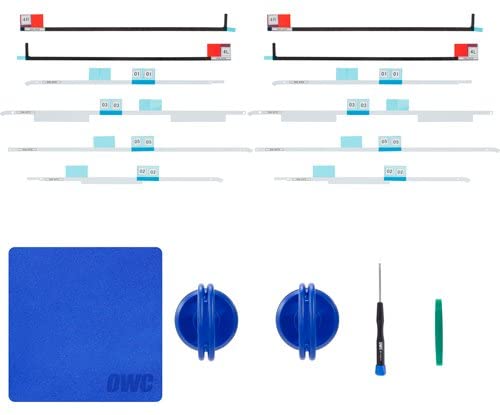Sepsis is the body’s extreme response to an infection. It affects approximately 1.7 million adults in the United States each year and potentially contributes to more than 250,000 deaths. When identifying and treating sepsis, minutes count, and every advantage could save lives.
THE PROBLEM
Before Tampa General Hospital developed and implemented an early warning system to identify sepsis, the difficulty its physicians and other members of the clinical team experienced was the need to assimilate a significant amount of data to navigate differential diagnosis.
“For sepsis, early intervention saves lives – every minute counts,” said Dr. Peggy Duggan, executive vice president and chief medical officer at Tampa General Hospital. “Sepsis presents in varied ways and across all populations, from the neonate in the NICU to an adult trauma patient.
“We looked at the data and determined we needed a consistent tool to support the clinical staff with real-time, solution-oriented processes that aggregate and prioritize sepsis-specific risk data,” she added.
PROPOSAL
Tampa General Hospital is using the data generated by its GE Command Center system, which monitors the location, care and status of every patient within the hospital, for its early warning system for potential sepsis cases. This approach, supported by predictive analytics, is designed to translate to better prevention and earlier intervention for patients.
“One of GE’s strengths is taking data from multiple areas of the electronic health record and presenting those pieces relevant to our specific needs – inclusive of laboratory values, vital signs and other structured data – in a real-time and prioritized manner,” Duggan explained.
“We pulled Tampa General-specific data from the technology to show that when the order set is utilized, the patient receives appropriate pathway-based care 50% more often.”
Dr. Peggy Duggan, Tampa General Hospital
“Their proposal was to work closely with our clinical staff to understand and prioritize the necessary criteria and in turn build it into an intuitive interface that could collate data into risk scores,” she continued. “That interface would show all the information our caregivers need, quickly and in a prioritized manner, so that the patients of highest concern could be evaluated first.”
Historically, early recognition and rapid intervention are the only things that data has shown to reduce mortality in sepsis populations. The early warning system was designed to rapidly identify patients at risk for sepsis, creating a way to assure appropriate care and better patient outcomes.
MEETING THE CHALLENGE
“In order to be successful, we needed to take the technology and drive process change to support the patients and the clinical teams,” Duggan noted. “Without the workflow changes and appropriate staffing, the technology would not have its intended effect.
“At Tampa General, we staff the sepsis program 24 hours a day, seven days a week, with our rapid response team,” she continued. “This group of highly skilled nurses who have critical care experience, evaluate the patients, interface with frontline nurses and physicians, and drive the care for at-risk sepsis patients.”
The hospital has a multipronged approach and a physician champion, Dr. Jaimie Weber, who works closely with the physicians, advanced practice providers and nursing teams to continue to improve the process and monitor the data.
There is a robust feedback loop that allows for continuous improvement and for staff to better understand treatment opportunities, as well as fix system problems.
RESULTS
“We are proud to say early death rate – which refers to death within 48 hours – has decreased by two percentage points, from 6% to 4%,” Duggan reported. “We also are seeing length of stay trending down.
“Our success metrics within our sepsis work focus on the overall process and not just the technology,” she continued. “Some of our biggest successes include the activation of our robust team focused on best practice sepsis care, development of evidence-based clinical pathways for sepsis care and alignment of our order sets.”
For example, with the order sets – which are evidence-based grouped care orders that the physician uses to drive clinical care – utilization prior to this project averaged 27%. Staff discovered without strong processes behind the order sets, it can be difficult to get everyone on the same page in using them.
“We pulled Tampa General-specific data from the technology to show that when the order set is utilized, the patient receives appropriate pathway-based care 50% more often,” Duggan said. “When the patient receives appropriate pathway-based care, their mortality is reduced from 23% to 7.5%. This hard data around why we should use the order sets led to an increase in physician usage to greater than 70%.
“Our biggest overall success has been the interdisciplinary engagement around the problem and focused efforts for continued improvement,” she continued. “The day-to-day transparency into opportunities for improvement, and the close communication between team members, has allowed us to better understand our system breakdowns, fix them in real time, and continue to provide world-class patient care.”
ADVICE FOR OTHERS
“Technology is incredibly helpful, but only if you staff it to meet patient needs and align it within the workflow of the frontline staff,” Duggan advised. “Leveraging technology within clinical care also needs champions to drive the work. Technology will not be useful if it adds to stress or is not well integrated into clinicians’ and clinical teams’ day-to-day processes.
“Additionally, setting measurable goals at the start keeps everyone on the same page and working toward the same finish line,” she concluded. “The biggest piece of advice we have for someone considering implementing any technology into their services is you have to understand the need you are trying to meet and engage all of the end users in the design process.”
Follow Bill’s HIT coverage on LinkedIn: Bill Siwicki
Email the writer: [email protected]
Healthcare IT News is a HIMSS Media publication.



